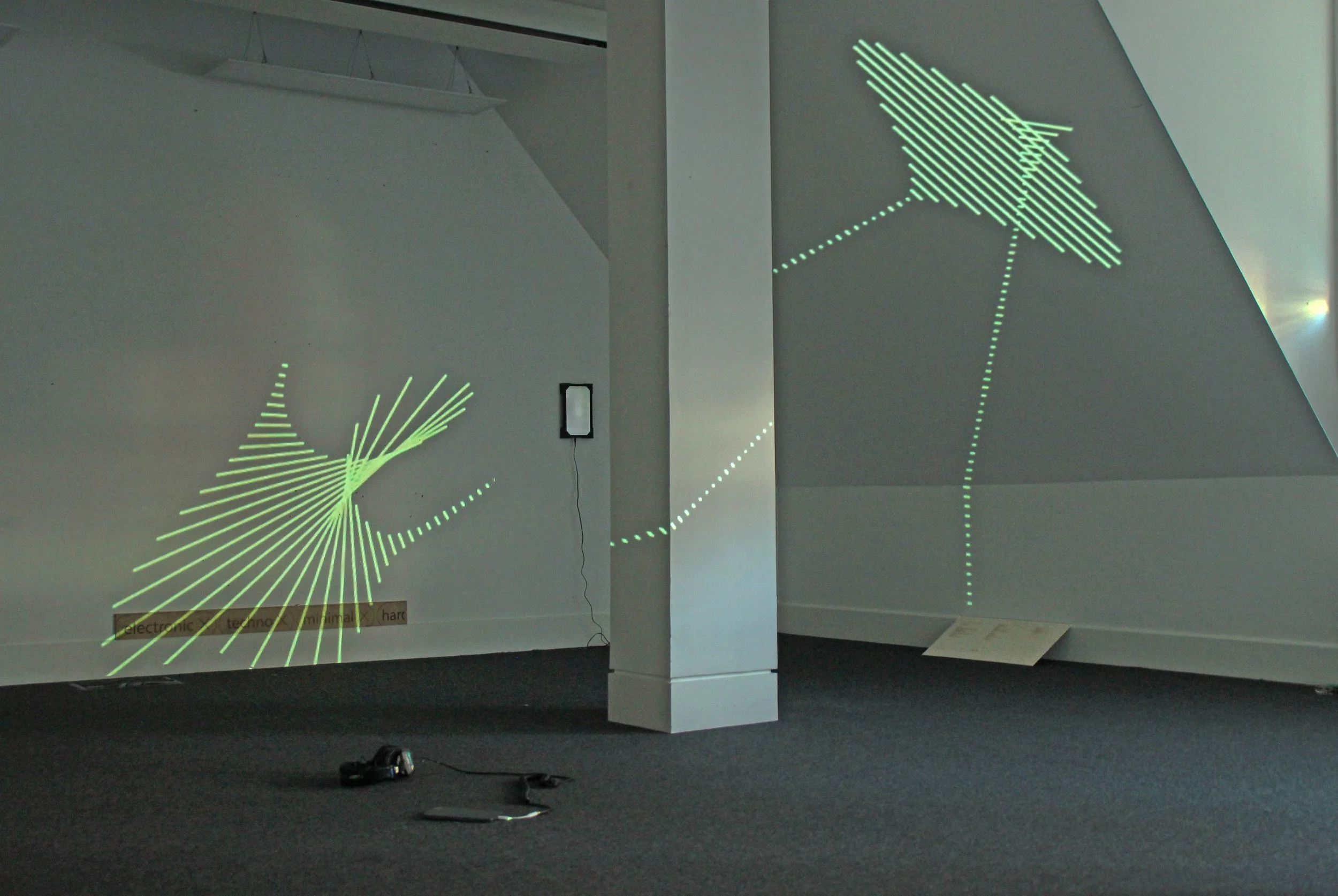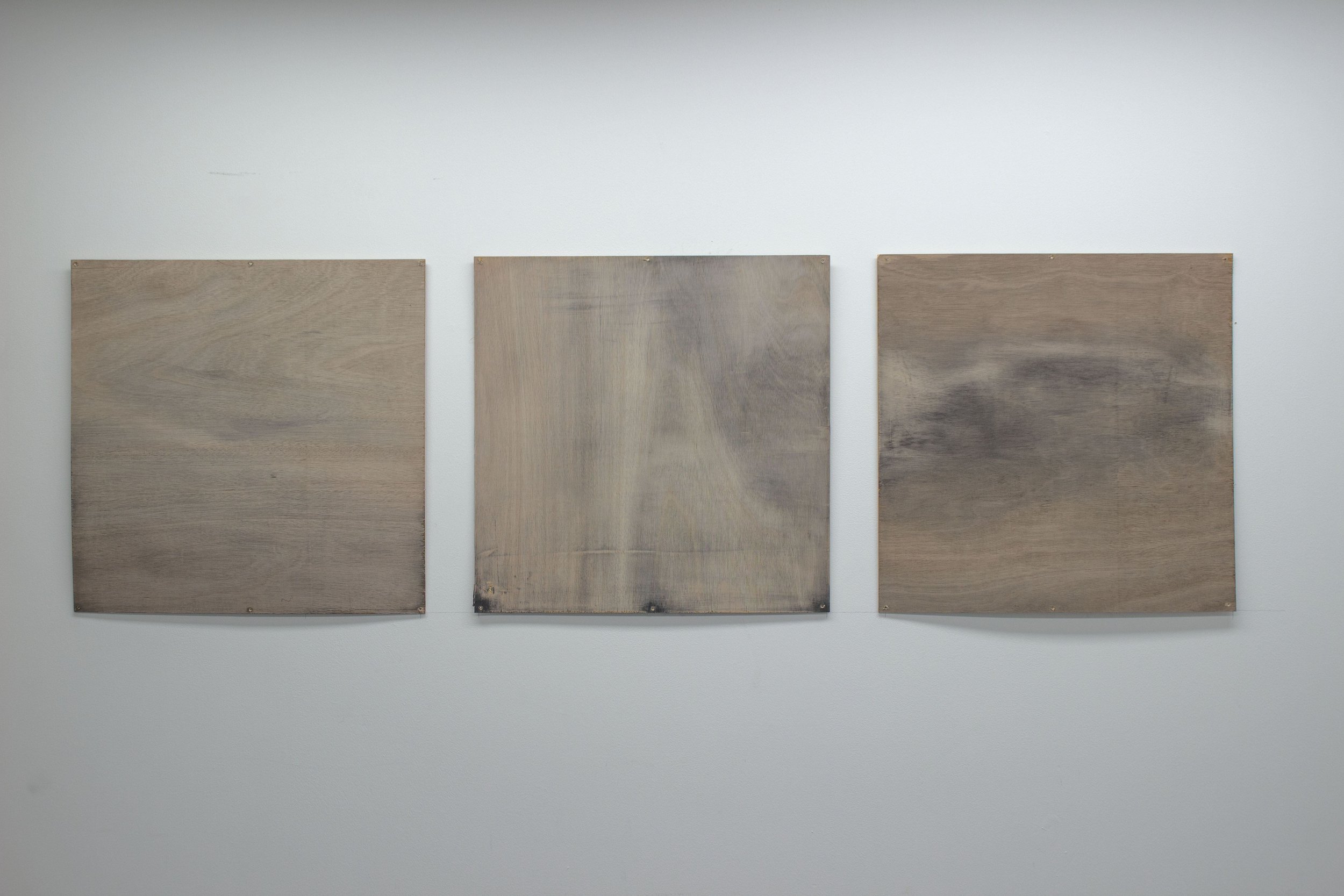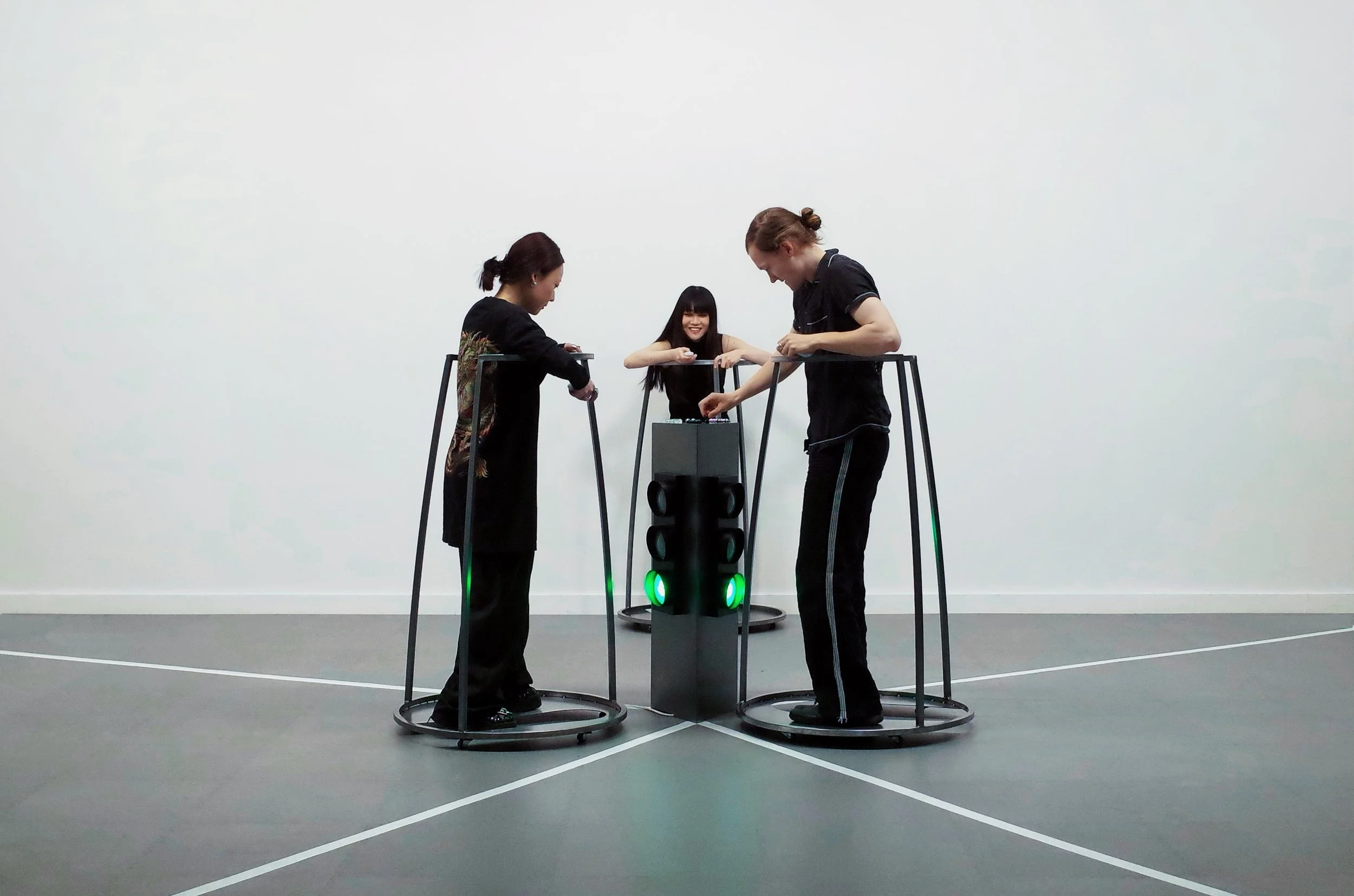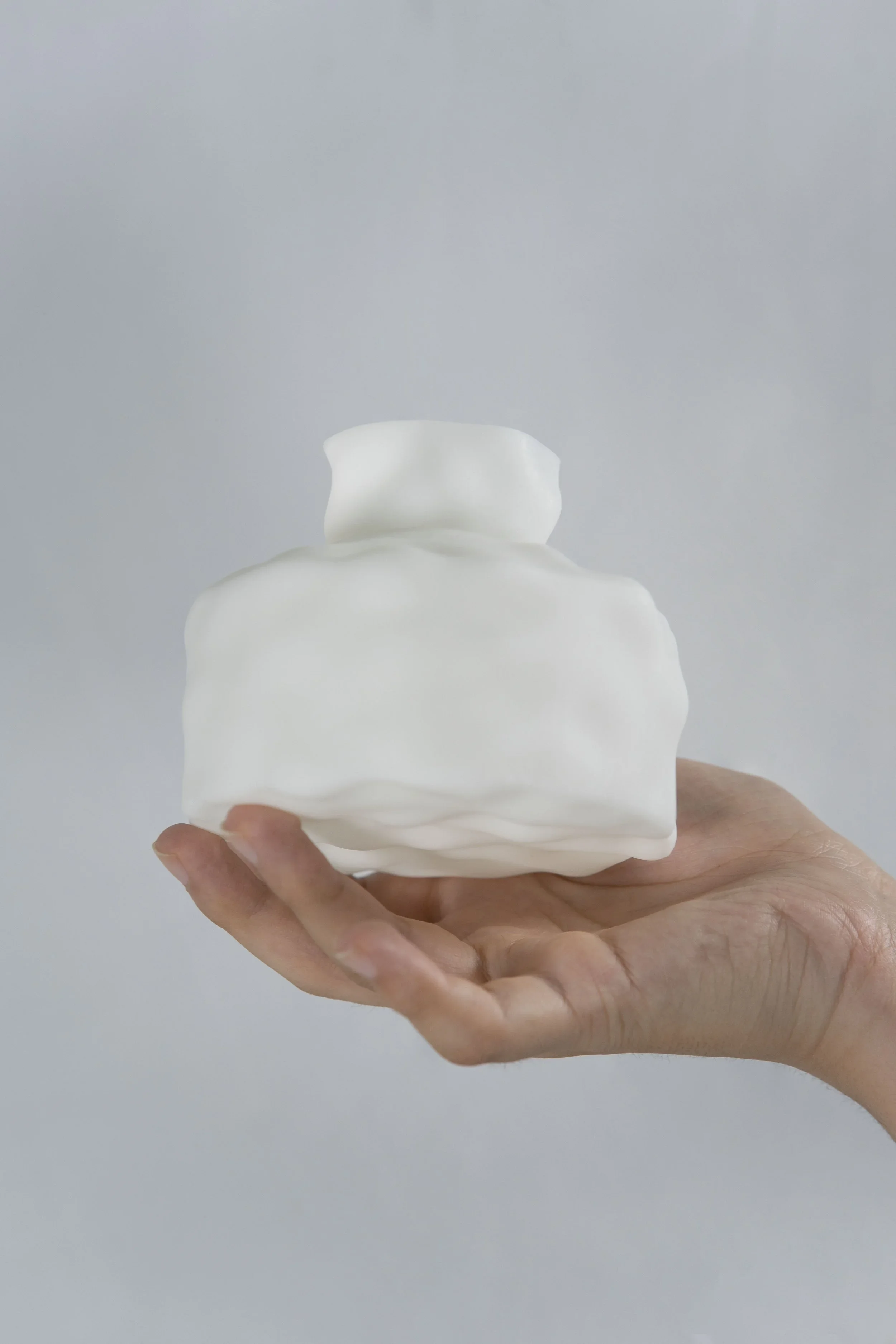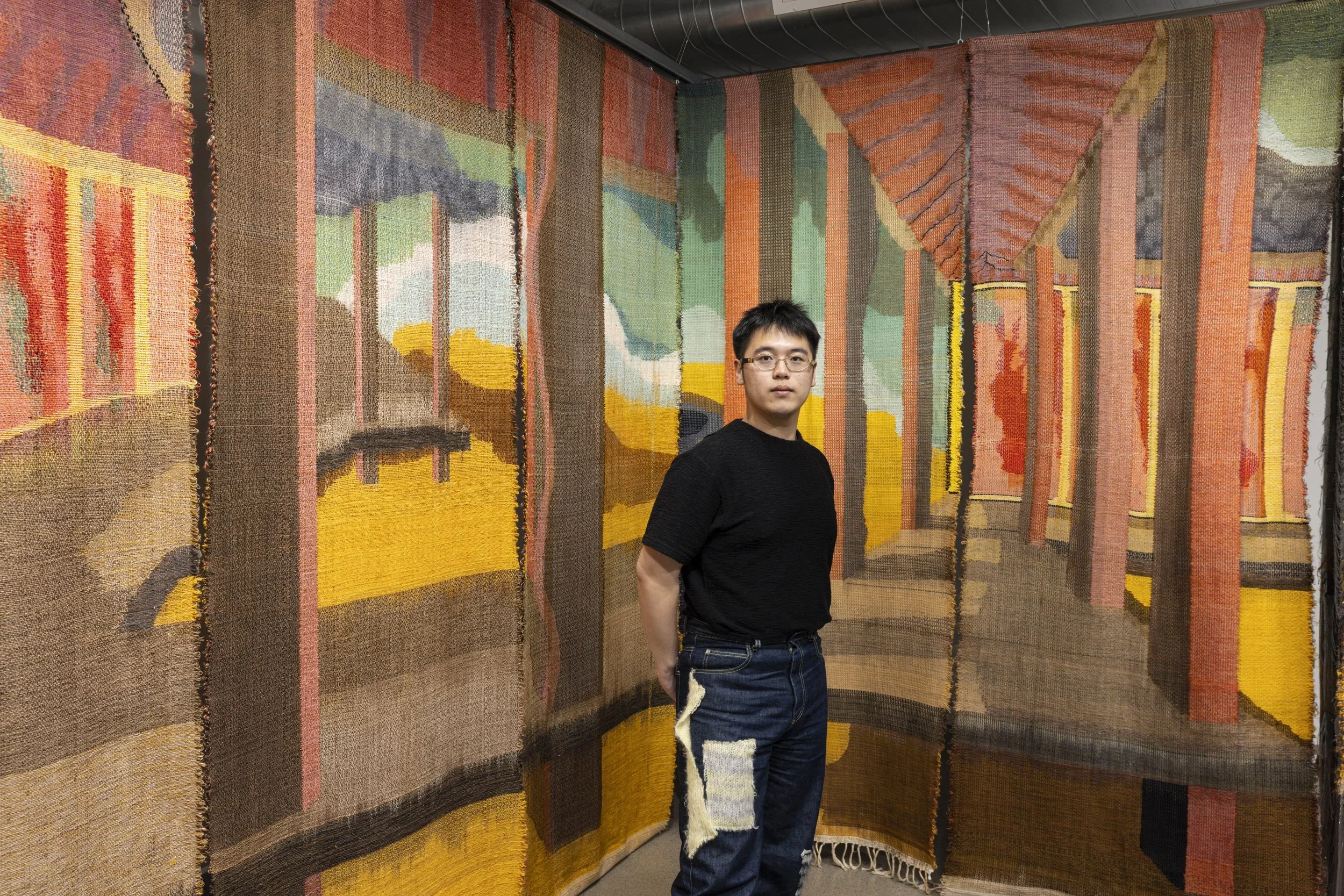10 Questions with Chaney Manshu Diao
Chaney Manshu Diao (b.1996, China) is an artist and poet whose practice explores the concept of identity from the lens of trans* (-gender, -human, -bodies) and queer studies through body, linguistics, and movement. Chaney's early practice emphasized the awareness of cultural diaspora. By considering the body as a mobilised site entering in and out of geographical boundaries, Chaney explores the meaning of being inter/national, multi/cultural; community, and otherness; as well as the construction of Asianness.
Chaney Manshu Diao - Portrait
With the emergence of new artistic interests, including DJ, Rave, and club culture, Chaney's recent work bridges the artist's personal lifestyle into her art production. Autotheory becomes a major reference for Chaney to alter the power dynamic between theory and living experience, fiction, and non-fiction relating to body and identity politics, which is now grounded by the artist's own being. Following her BA and MA in fashion in Central Saint Martin's, Chaney is now on her second postgraduate specialising in Fine Art Media in Slade. Chaney had her solo show Pleasure 41 at 5th Base Gallery, London, as part of the annual east end Nocturnal Creature art festival in 2019. Recent artist workshops, publishing, and group exhibitions include Power to change Programme at TATE, London (2021); The Paper, by good press, Glasgow (2021); Stand Up! at Artcore Gallery, Derby (2020). Chaney's conceptual approach to fashion, clothes and identity has been featured by magazines including i-D, Numero, Vogue, BoF, WWD, French Fries Magazine, Schon Magazine.
On Rave, Mixed media installation, site specific, 2022 © Chaney Manshu Diao
INTERVIEW
First of all, introduce yourself to our readers. What are your history and your artistic background?
Hello, my name is Chaney Diao. I was born in Hangzhou, China, and currently reside in London. I am now in my second year of a MA at Slade school of fine art; before that, I had my degree in fashion design in Central Saint Martin.
What experiences and studies helped you become the artist you are today?
Interestingly, my fashion background is something I have reflected on a lot since I started making artworks. Coming from a fashion background, we were trained to be very good at dealing with the constantly changing environment the fashion eco-system rests upon. This, in some way, is very different from the traditional paradigm of art making, where the generation of art relies on some degree of consistency and stability. I found these different ways of understating how to do work and what work to make from my fashion training gives me the opportunity to remain somewhat an 'outcast' of the art world, which allows me the freedom of being very cautious and reflective about the art path I follow. Fashion also offers me a great awareness of fluid identity. Even though at the moment I am out of the fashion discipline, I found my interest in art-making is still centred around identity politics.
State of becoming, acrylic, charcoal, pencil on wood, 60x60 cm, 2022 © Chaney Manshu Diao
State of becoming, acrylic, charcoal, pencil on wood, 60x60 cm, 2022 © Chaney Manshu Diao
You work on several different themes closely related to the concept of identity. How much of your personal experience is reflected in your practice?
I think the concept of identity is such a vast subject area, which includes concerns, to name a few, on the body, gender, sexuality, and nationality. Since it is so broad, in many ways, my personal experience feeds into it. Although some of my artworks do not directly build upon any specific experiences I had, I still find the overall fixation upon this subject matter result from a slightly disturbing past and an ongoing struggle to feel comfortable about who I am.
Among others, you speak of cultural diaspora and Asianness, community, trans and queer identities, and otherness. How do you incorporate such themes into your work?
My interest in cultural diaspora and Asianness was formed at the very beginning stage of my art-making, when I was inspired by intersectionality within feminist studies. I reflected upon my identity of being Chinese and queer within the Western context (where I am living and working at the moment), which is somewhat marginal. At that time, I was reading Leah Cowan's Border Nation, where the conception of border is bridged with a set of progressive re-/(or de-)/constructions upon notions of community, nation's border, national identity, and so on. I was very much inspired by the book and started to look into my own gender and national identities with a political reflection. I suppose this is how those varied themes have been linked and merged within my work under a singular narration or theoretical foundation.
On Rave, Mixed media installation, site specific, 2022 © Chaney Manshu Diao
Your statement considers the "body as a mobilized site entering in and out of geographical boundaries." It is an interesting point of view; how did you develop this concept? And how does it influence your life and work?
As a continuation of the previous question, I figured mobility is an extremely vital concept in relation to Cowan's notion of border control, together with my personal migration to the UK in the past eight years, which resulted in both a geographical change to my living location and an unsettlement due to UK's immigration law. The concept of being Chinese and queer changes dramatically within my daily context of living as a foreigner inside of the UK border. Those feelings, to some degree, triggered my impulsion with making works like 'bordering tartan' and 'performing dictionary'. At the same time, I am also very aware of the fact that moving in and out of a border or nation in some specific situation is a choice I do have, going back to China, for instance, which conceptually makes me wonder about the meaning of being Chinese or belonging to any sort of a group within diverse contexts geographically, politically and beyond. My body, which carries political meanings about its gender, class, and nationality, becomes the medium for me to re/construct upon its carried political value within a dynamic play around the mobility this body has: such as where this body is, what this body is doing, and what utterance I am making.
What are your main sources of inspiration? Do you have any artist, philosopher, or personality you particularly admire?
I think my inspirations always come from something that is very mundane and intimate to myself, probably things that's been around all the time that I found it puzzling, wired, uncomfortable, intriguing, and stimulating. Ultimate examples I could list, but I found there is one core quality to it, that is those things make me feel. The longer I am embracing the freedom in art-making in approaching subject matters that are purely self-navigating, the more I start to appreciate the first source of inspiration that is so close to me or even purely just myself. This reflection also relates to my current interest in Autotheory, which informs a lot of queer studies and stories in dismantling the distinction between theory and lived experience. I found this awareness very relevant to whom I turn to for inspiration. In this way, I admire any artists or art-related practitioners who have not even been conceived under an artist title (such as a very progressive DJ or designer) whose work honestly represents their personal lifestyle and community.
Who are they now, installation, 120x40x180 cm, 2022 © Chaney Manshu Diao
Who are they now, installation, 120x40x180 cm, 2022 © Chaney Manshu Diao
In your statement, you also mention discovering DJ, Rave, and club culture and how those are entering your artistic practice. Can you tell us more about it?
DJ, Rave, and club culture are defiantly very new areas of interest to me within art practice. Rave and club culture come more naturally, as they have always been part of my lifestyle. In post-pandemic in London, I see the full return of the rave scene - warehouse parties, eastern margin, and Gigi club, where I spent many of my weekends. Coming out of my first year as an art student in Slade, I started to be very bored by my research-based practice that too cautiously relied upon the theory I read. Then I decided to make a shift change in my way of working by trusting my very personal interest and bringing those 'unartistic' things into my practice. Rave is among the first things I reflected upon, as I have a few poems I wrote and kept the next day after some wonderful nights out I had.
For the emergence of DJing within my practice, it somehow came by chance. I probably haven't told many people about it; DJing has been my ideal job for years as I really enjoyed the wired sourcing and archiving quality, which not many people might agree with me. Yet, I have never had the nerve or the chance to do it, whether as a lack of DJ equipment or a venue to play at. It is partly by chance I was asked to do an opening DJ set for an exhibition I was part of, which became the first DJ set I've ever done. That request also came at a time when I was thinking about mixing and remixing in relation to genres within my art practice; DJing, therefore, seems to be the most obvious but relevant 'medium' that allows me to further explore this artist's interest.
Is there anything else you would like to experiment with or introduce in your practice?
Dance! I really want to do a dance piece based on the clubbing movement and body movement that resembles vibration and oscillation. I would also imagine it to be a piece that mixes a lot of different styles of dancing into one - especially more underground dance styles such as gabber, industrial dance, and voguing. I am very interested in the association between certain music genres to the dance movements, its community (people who dance to it), and the aesthetic vibe associated (such as dress and make-ups). I am hoping the dance floor becomes a magical place where the specific recognition towards each dance movement is demolished, and every segment can be reworked into something beyond definition within this liminal timeframe.
Inhale at the gateway air enters your lung your head over loaded, cyanotype photography, 25x25 cm, 2022 © Chaney Manshu Diao
What are you working on now? Any new project you want to share with our readers?
I've started drawing recently, which is completely new as I've never painted or drawn anything seriously before. I was very surprised to notice that my body becomes so present within the gesture of painting/ink making, which to me very much relates to my interest in the body's capacity to transcend one's own identity's limitation into a non-binary realm.
Lastly, where do you see yourself and your art five years from now?
I hope that in five years, I will be more active and involved in the underground club scene in London, both as a performer and a DJ. With my art practice, I hope to have developed a strong body of work that would be very reflective of my personal interest in subcultures - whether theoretically or energy-wise. I hope to be a very active artist and showcase my work in a varied context that would not only be received under an institutional structure in art. I also hope to remain part of the fashion scene in London as well.

